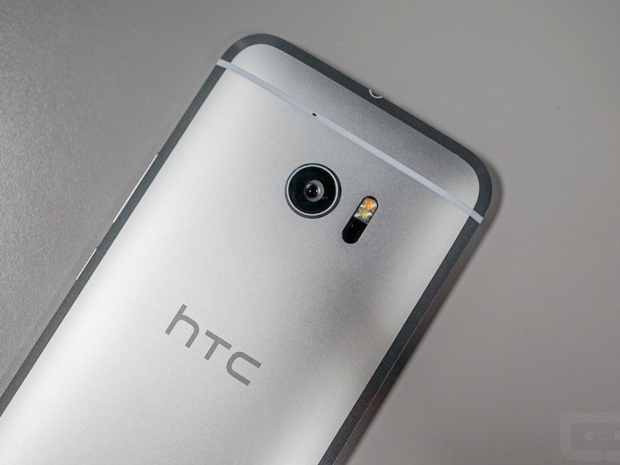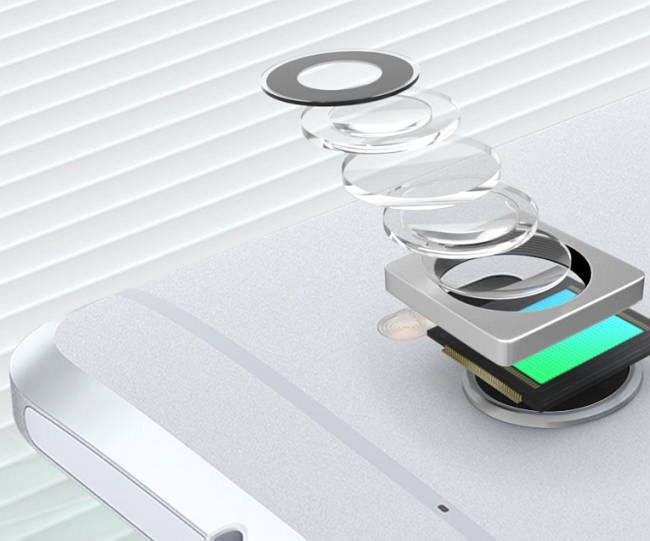
Over the past five days, there have been HTC 10 reviews surfacing from Engadget, TheNextWeb, The Verge, BGR, CNET Slashgear and others mostly calling the device “impressive but imperfect” or “more appealing to HTC fans than mainstream users.” While we will leave overall device functionality and aesthetic appeal to the subjection of each reviewer, we are more interested at this point in the quality and functionality of HTC’s second-generation UltraPixel 2.0 camera hardware. Along with many others, we want to see it stacks up with the company’s previous One M9 flagship device and several other competing smartphone products.
A brief history of HTC’s UltraPixel lens
HTC’s UltraPixel technology is a custom image sensor that originally debuted with the HTC One M7 in April 2013, the company’s seventh flagship smartphone product. This was a 4-megapixel, 28mm lens with 2.0?m pixels and featured smart LED flash, 1-degree optical image stabilization (OIS) and autofocus with f/2.0 aperture. Over the course of three years, the company made incremental hardware improvements, but critics suggested that photo quality has not on-par with some of Samsung’s Galaxy Series releases in terms of HDR quality and color accuracy.
In March 2014, the company released the HTC One M8 with a second 4-megapixel rear-facing camera that effectively bumped up the light level in low-light image capture and generally had a sharper image with more accurate colors than its M7 predecessor. This was a 28mm lens with laser autofocus and dual-LED dual tone flash with f/2.0 aperture. However, the newer device’s second camera addition didn’t necessitate an upgrade because the camera’s best feature – depth of field (Ufocus) – became available as a free software tool courtesy of Google’s own Camera app in the Play Store. Some reviewers even claimed that for depth-of-field (DoF) tests, it performed just as well as HTC’s dual lens configuration.
In April 2015, HTC decided to throw out its custom UPixel camera on the HTC One M9 and replaced it with the same 20.7-megapixel sensor found on the Sony Xperia Z3. This was a 27.8mm lens with laser autofocus and dual-LED dual tone flash with f/2.2 aperture. The One M9’s rear camera still, however, produced a slightly more muted color tone and over-boosted exposure as a means of compensating for mediocre low-light performance.
In May 2016, the company will now release the HTC 10 with a 12-megapixel rear-facing camera that features a redesigned UltraPixel lens with smaller, 1.55?m pixels. Keep in mind that the original intent of having larger pixels is to eliminate low-light noise and performance. With that said, HTC’s switch from bigger 2.0?m pixels to somewhat big 1.55?m pixels, combined with a claim of “superior low-light performance,” is sure to be a target for reviewers. This time, the 26mm lens will include second-generation laser autofocus, dual-LED dual tone flash and optical image stabilization with f/1.8 aperture.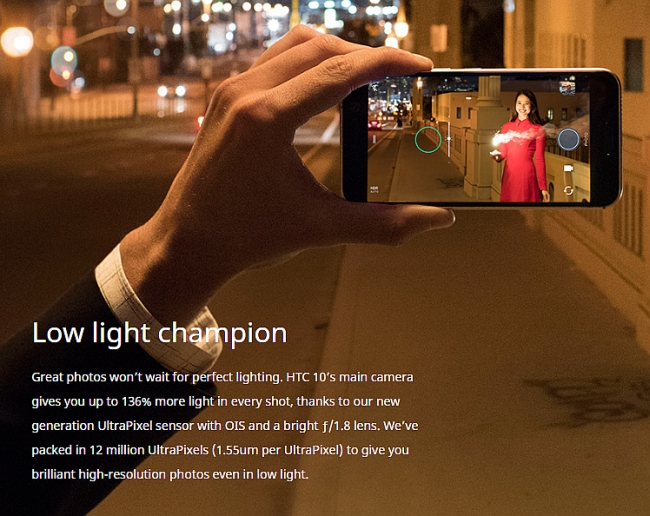
The HTC 10 features dual optical image stabilization (OIS) lenses for both front and back cameras, making it the world’s first with dual OIS cameras. Of course, HTC’s official webpage claims the HTC 10 is a low-light champion, giving up to 136 percent more light in every shot. The company camera application has also been improved and now launches in about 0.6 seconds, making it much more reasonable compared to previous versions.
DxOMark gives HTC 10 UltraPixel 2.0 an 88/100
DxOMark is a site that has extensively analyzed the image and video quality of over 9,000 cameras, lenses and mobile phones. The site was created in 2003 as a scientific method of testing camera hardware using industry-grade lab tools, software and test protocols. In its initial review, DxOMark gave the HTC 10 rear-facing camera an 88 out of 100 in overall quality.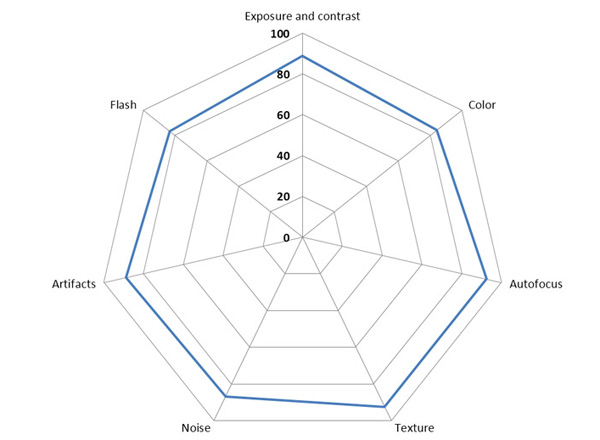
HTC 10 – DxOMark Score (88/100)
The site uses DxO analyzer, a suite of test protocols, hardware and software that measures consistency across various camera lenses and products, independent of manufacturer performance claims.
“The overall DxOMark score is calculated using both the Photo and Video sub scores. Presented scores are rounded to the nearest whole number, with greater weight given to the Photo subscore when calculating the overall score. Each subscore analyses image quality in a range of categories, including Exposure, Autofocus, Texture, Noise, Artifacts and Flash, with each tested in varying lighting conditions. A great all rounder, the HTC 10 scored well in all our tests, securing a final Photo sub score of 88 and 86 for Video.”
To improve indoor image quality, DxOMark recommends applying a subtle blue filter in a picture editing app to offset any yellow casting while slightly increasing saturation and vibrance to improve under-saturated color tones.
HTC 10 – DxOMark Overall Score (88/100):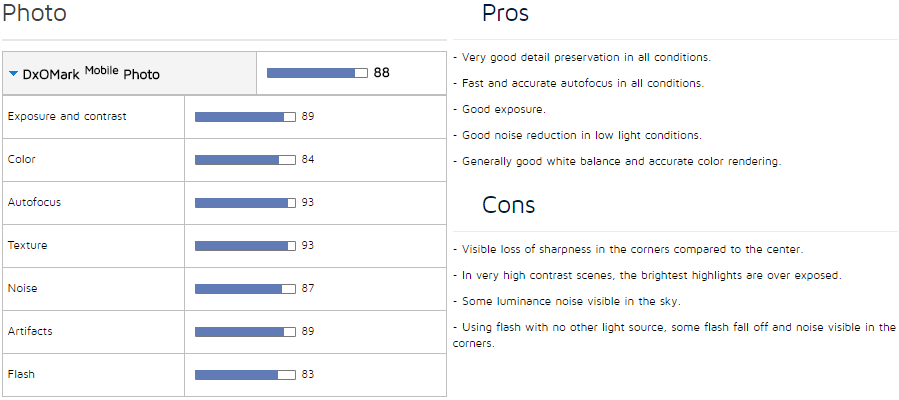
Samsung Galaxy S7 Edge – DxOMark Overall Score (88/100):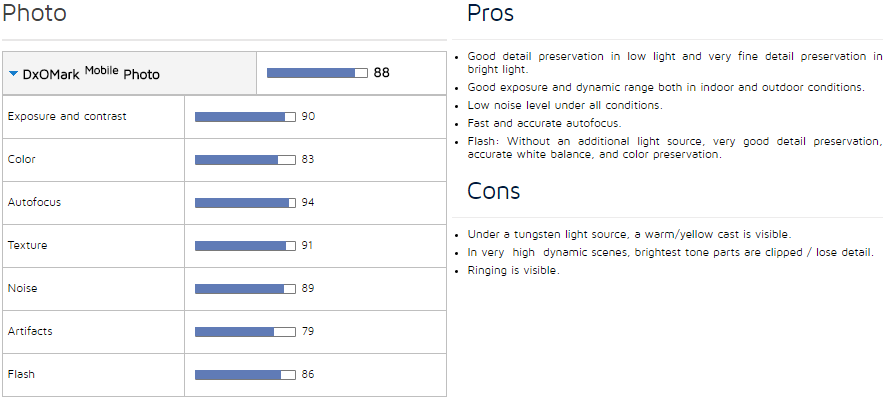
Sony Xperia Z5 – DxOMark Overall Score (87/100):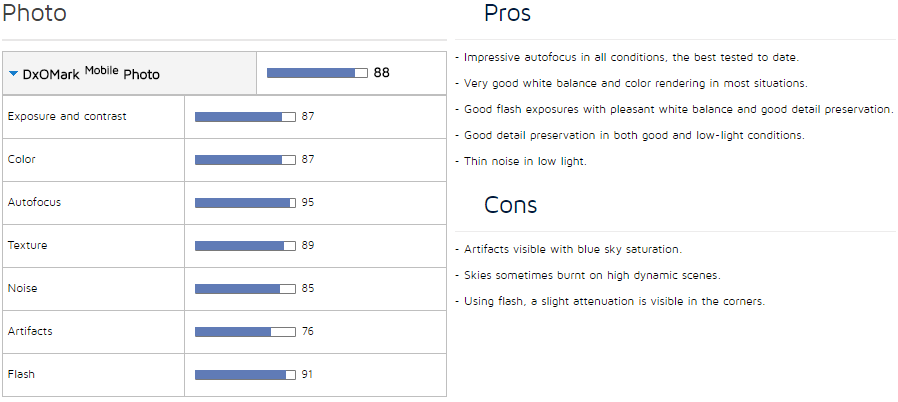
Apple iPhone 6S Plus – DxOMark Overall Score (84/100):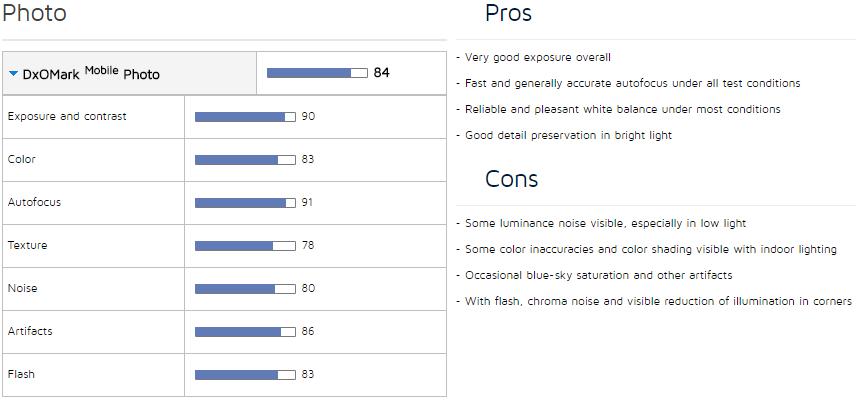
Google Nexus 6P – DxOMark Overall Score (84/100):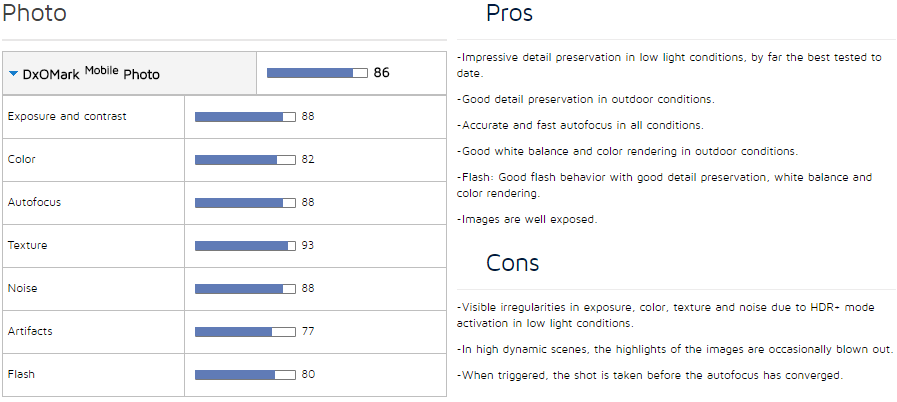
Most reviewers criticize autofocus software function, low-light image quality
When compared to the Samsung Galaxy S7, the folks at Engadget have concluded, “when it gets dark, the autofocus starts to struggle a lot more. It'll take a few tries to lock onto what's in front of it, and the resulting photos can be indistinct and smudgy. Samsung definitely has the edge in the dark.”
The editors at TheNextWeb have reviewed the HTC 10 for over a week and concluded HTC’s 12-megapixel UltraPixel 2.0 “is the best camera HTC’s squeezed into one of its handsets, but still not sure it’s the best camera on a smartphone.”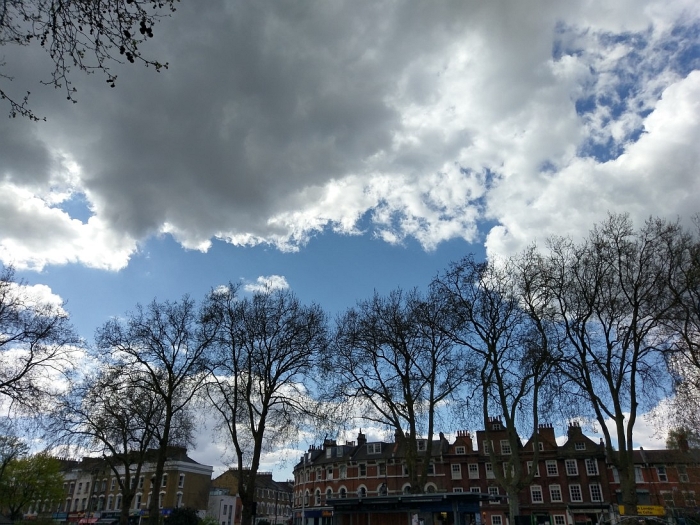
HTC 10 sky sample (via TheNextWeb.com)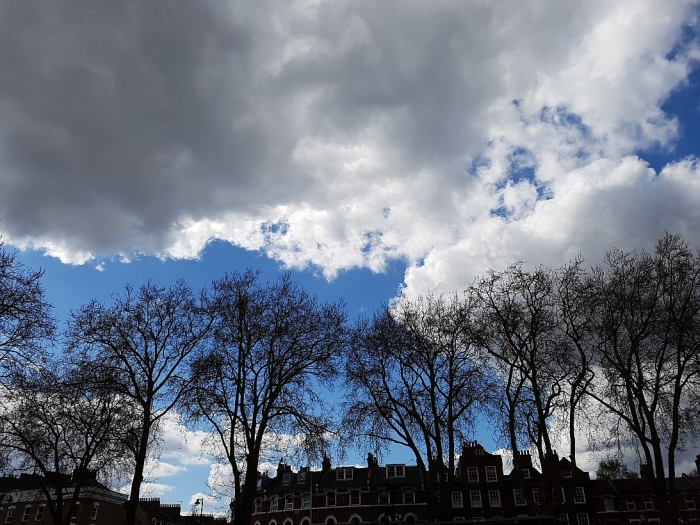
Samsung Galaxy S7 sky sample (via TheNextWeb.com)
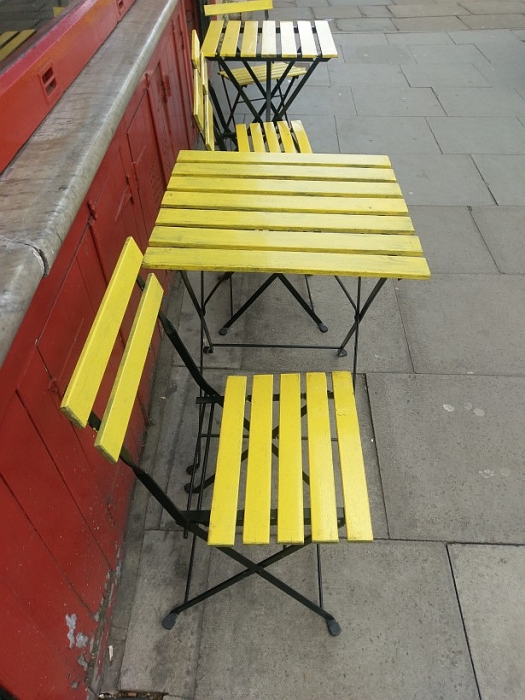
HTC 10 table and bench sample (via TheNextWeb.com)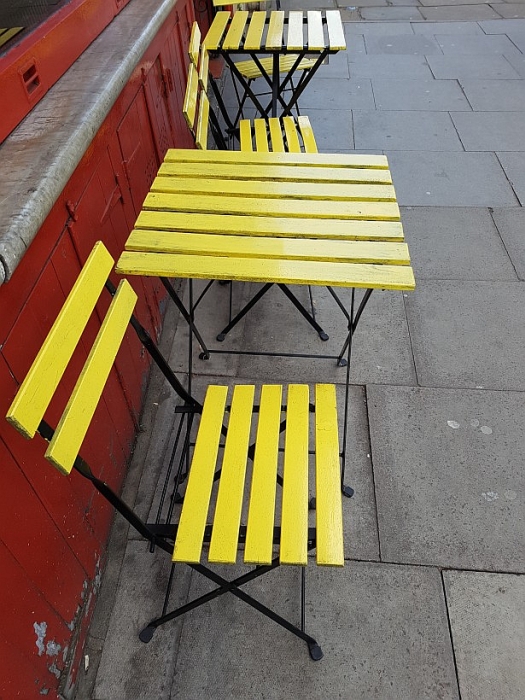
Samsung Galaxy S7 table and bench sample (via TheNextWeb.com)
Meanwhile, the folks at Slashgear have put together a sample gallery of HTC 10 rear-camera photos featuring the bigger-than-average pixels of the UltraPixel 2.0 lens. One point we found interesting from their review was that HTC’s second-gen laser autofocus system isn’t necessarily perfect at detecting objects in the way of the lens. This is more of an issue with initial camera software release and HTC claims it will be improved over the course of the next couple weeks. Overall, the executive editor concluded that "focus frustrations [and] underwhelming low-light performance shave away at [HTC 10]’s usefulness as a go-to camera. There's potential there, but HTC needs to work a little harder in order to fully unlock it."
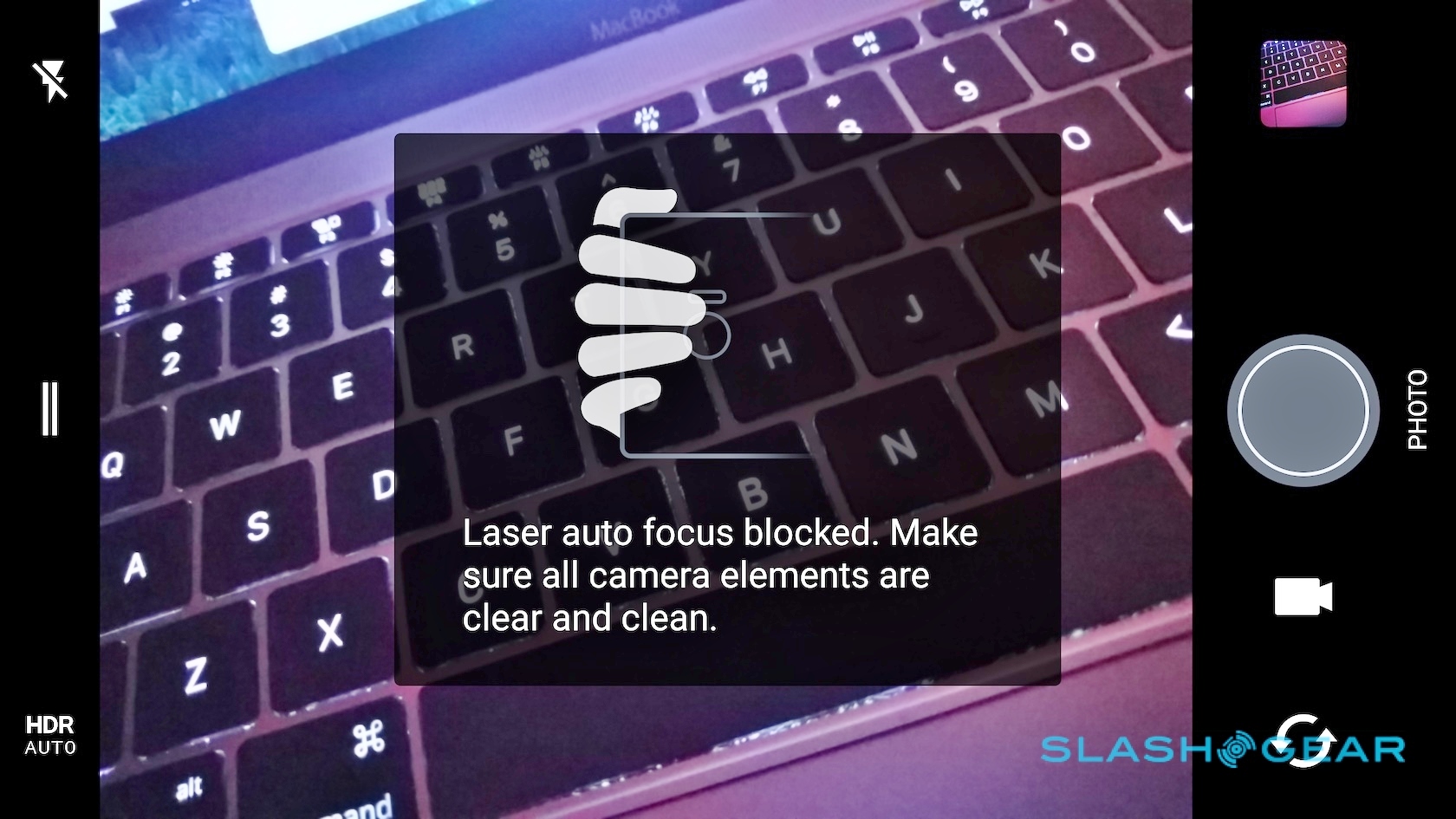
Image credit: Slashgear.com
HTC 10 pre-orders and availability
Verizon will be launching the device in the US on April 29th and the other US carriers (AT&T, Sprint, T-Mobile) are expected to follow suit sometime in early May (several sources are claiming May 12th). There will be three versions of the device – HTC itself is taking pre-orders for a global unlocked unit, while AT&T and T-Mobile will be selling units compatible with their own networks.
If you are in the reservation queue for the HTC 10 and are primarily interested in purchasing one for the UltraPixel 2.0 camera lens, we might advise waiting to try it on store shelves with a Galaxy S7, Nexus 6P, Huawei Mate 8 or iPhone 6S at hand to compare image quality before drawing any distinctive conclusions. Mileage may vary, and no two individuals have the same bucket list of camera hardware and software combinations as photography is an art meant to be created expressively rather than uniformly.

